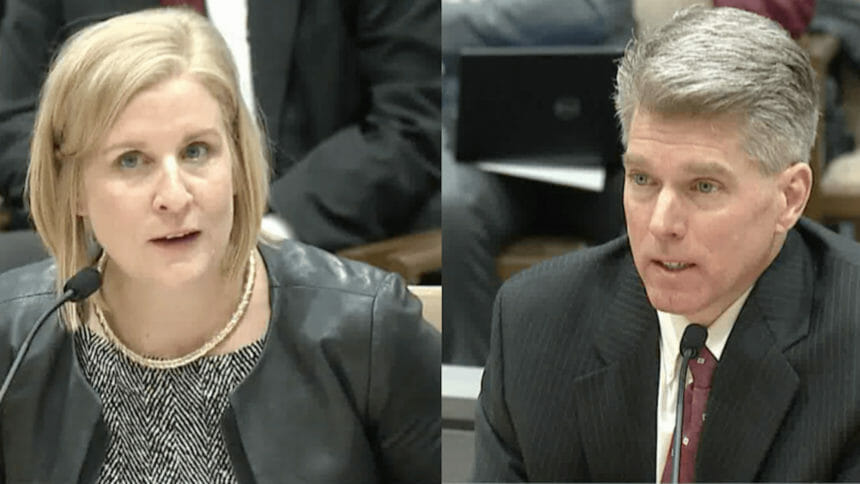
A bill that would regulate electronic monitoring in resident rooms of Minnesota assisted living communities, nursing homes and similar facilities is moving through the state legislative process with the support of provider organizations, whose leaders expect it to become law.
If it does, then Minnesota would join at least Texas and Utah in having laws mandating that assisted living communities grant resident requests to install monitoring equipment, although the specifics of the laws vary by state. As of mid-2018, six states — Illinois, Louisiana, New Mexico, Oklahoma, Texas and Washington — had laws applying to nursing homes. New Jersey also has a “Safe Care Cam” program that loans micro-surveillance equipment to healthcare consumers, including families of assisted living and nursing home residents.
Under the Minnesota bill, as currently written, all senior living and long-term care facilities would be required to allow electronic monitoring beginning Jan. 1, 2020, informing residents of their rights and making available to them a state-developed notification and consent form.
The state senate’s Committee on Family Care and Aging voted to forward its “granny cam” bill to the Senate Health and Human Services Finance and Policy Committee on Wednesday after a hearing at which representatives of Care Providers of Minnesota and LeadingAge Minnesota, as well as residents’ family members and others, testified.
The bill “is in contrast to the current law, which is, ‘Anybody can do anything at any time and not tell anybody.’ So this is a big move — on both sides, frankly,” state Sen. Jim Abeler, one of the authors of SF 11, told committee members.
Facilities would be required to post signs that electronic monitoring may be occurring there, Abeler said, and people would be prohibited from accessing or disseminating a resident’s recordings or interfering with a device without permission unless a resident or his or her roommate withdraws consent for its use, “except to address the welfare of a resident.”
Facilities would be prohibited from refusing to admit and from removing or retaliating or discriminating against a resident for installing a camera, he said.
Recordings could be used as evidence in legal proceedings, but facilities would be protected from civil or criminal liability stemming from the disseminating of a recording, the state senator added.
Under most circumstances, Abeler said, a resident would notify the facility where he or she lives when a camera is bought and installed. Under some circumstances, however, a resident who fears retaliation for using a camera would be able to notify the state ombudsman instead of the facility where he or she lives, and the facility would not be informed.
Care Providers of Minnesota disagrees with the provision in the bill under which facilities would not be notified but supports a “workaround” for emergencies that is in the legislation, Toby Pearson, vice president of advocacy for Care Providers of Minnesota, told committee members.
“Our members believe that, yes, we should receive notice, not as a way to ‘gate-keep’ people from doing it, but as a way to help protect and ensure and prevent more actions from taking place,” he said. “If we know about it, we can help protect the privacy of that individual. And also we feel that, if we give notice to folks that there will be cameras, it will act as a deterrent from people from misbehaving.”
Overall, however, Care Providers of Minnesota, the state affiliate of the American Health Care Association / National Center for Assisted Living, supports the bill, Pearson said.
“The use of electronic monitoring devices in senior living settings is becoming customary, and Minnesota law has been silent on the specific considerations relating to use of monitoring devices in these settings. This has led to … a variety of responses in the community and a lot of problems with the responses to those complaints,” he said. “This legislation would make clear that a resident can choose to install a hidden camera, sets clear guidelines for the consent of the adult and privacy considerations, and addresses notifications when a camera is installed.”
LeadingAge Minnesota, which also is an Argentum state partner, also supports the bill, testified Kari Thurlow, vice president of advocacy for the organization.
“We’ve had stakeholder discussions for a number of years and agree that it is time to pass legislation that … clearly defines that electronic monitoring for a resident is a right and defines the conditions under which that can be carried out and also identifies protections for pursuing that right,” she said. “Electronic monitoring can be helpful in prevention of maltreatment as well as improving communication between the family members and the providers. We’ve heard a number of examples of family members who are far away who’d also like to monitor, and we support that.”
Care Providers of Minnesota President and CEO Patti Cullen previously told McKnight’s Senior Living that she expects the camera-related legislation to move through the state legislature more quickly than efforts underway in Minnesota to license assisted living communities, “because there’s so much agreement” and little fiscal impact related to the issue.
“Our law is silent on it,” Cullen said. “We do have a one-party consent law, so cameras are being used, but there has been no guidance. There have been some assisted living entities and / or nursing facilities that had a policy saying ‘We don’t allow cameras,’ and we want to make sure that cameras are allowed in all of the settings. We have a great deal of agreement on what that would look like in Minnesota.”
That agreement came after months of meetings last year that included providers, regulators, consumers and policymakers.



